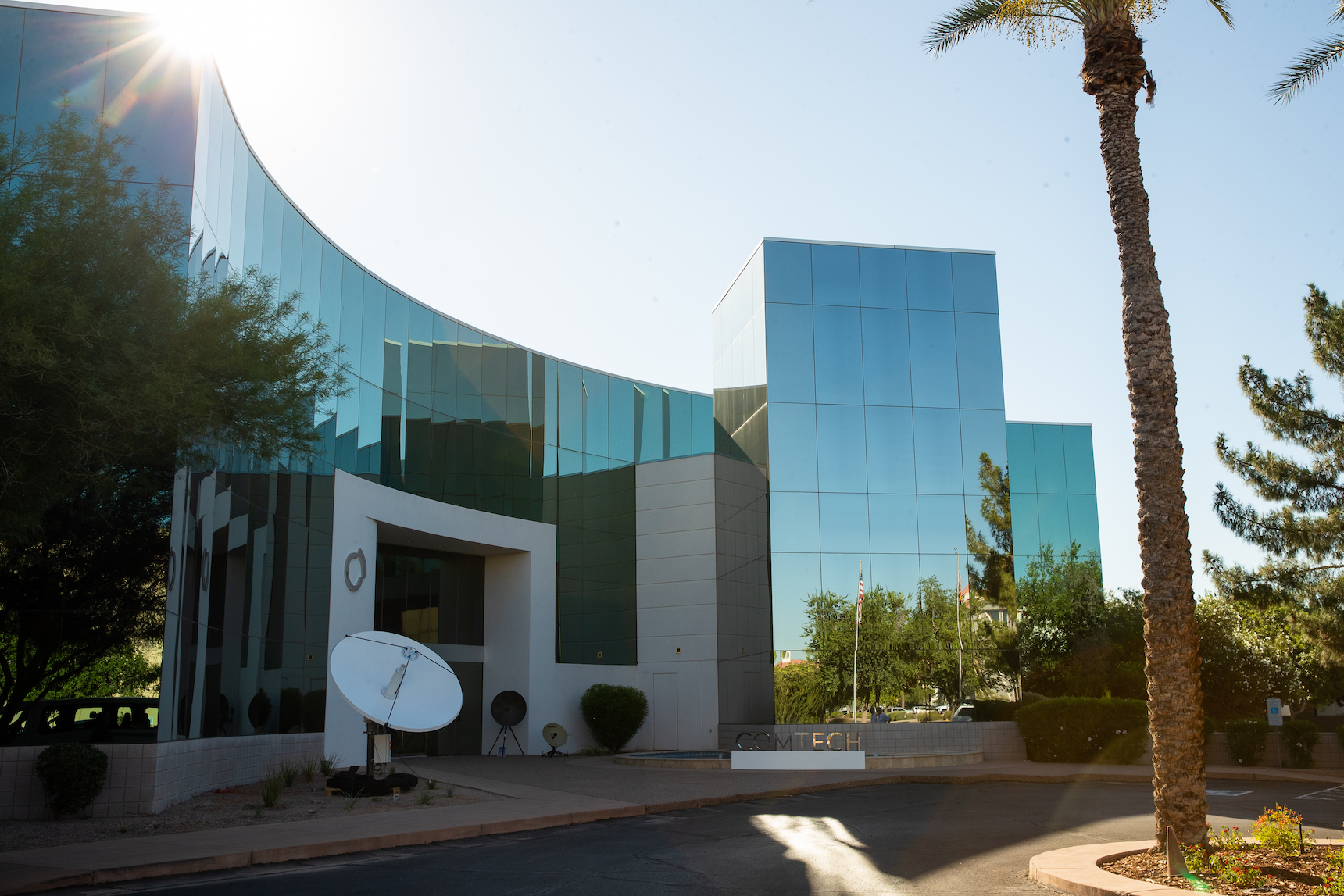Latest News

Comtech’s office in Chandler, Arizona. Photo: Comtech
Comtech leadership says the company’s transformation and focus on opportunities like virtualization and the convergence of satellite and terrestrial technologies does not change as the company looks for a new CEO.
The long-standing satcom ground technology provider has been going through a “One Comtech” initiative to unify the company and its capabilities. During the past year and half, Comtech brought together its siloed businesses toward common tools and processes, and demonstrated consecutive quarters of revenue growth.
The company’s former CEO Ken Peterman was the face of the company’s refresh after longtime CEO Fred Kornberg’s retirement. But in March, Comtech fired Peterman days before the SATELLITE trade show, saying it was for “conduct unrelated to business strategy, financial results or previously filed financial statements.”
Via Satellite spoke with Daniel Gizinski, Comtech chief strategy officer; Nicole Robinson, chief growth officer; and CTO Anirban Chakraborty last month about the company’s ongoing evolution.
Robinson emphasized that the changes at Comtech are greater than any one individual, and customers can be assured the company’s strategy isn’t changing.
“[We’re] sitting face to face with our customers and reminding them that our course doesn’t change, our strategy doesn’t change,” Robinson said. “We’re really excited about where we’re going.”
Former iDirect Government executive John Ratigan is now leading the company as interim CEO while Comtech searches for its next leader. Ratigan joined the company in December 2023 as chief corporate development officer.
There’s “a lot of trust in John Ratigan as the interim CEO and a long-term industry veteran,” Gizinski said. “I think he has a really clear understanding of what the market demands are, where we’re headed as an organization.”
In the company’s recent second quarter financial results for fiscal year 2024, Comtech reported roughly flat year-over-year sales of $134.2 million. Sales were down 12% quarter-on-quarter. However, adjusted EBITDA grew 33% year-over-year to an 11.3% adjusted EBITDA margin. The company said the bottom line performance is due to the One Comtech operational improvements.
Capitalizing on Virtualization and Convergence
Gizinski pointed to a number of trends impacting Comtech’s strategy: digitization and ready access to data, a move toward virtualization and cloud-native designs, and the ‘as a service’ model.
He said that part of the One Comtech initiative was unlocking capabilities that were already in existence, and bringing them to bear for new customers as part of an end-to-end solution.
As the satellite industry is going through a period of change with Non-Geostationary Orbit (NGSO) players, Gizinski says there is an opportunity to evolve as a ground tech provider to serve customers better.
“There’s the immediate assumption that NGSOs are disruptive. That’s often a good thing. There’s a large number of ground stations that need to be built out to support those Non-Geostationary operators,” he said. “We’re also seeing a recapitalization with several of the Geostationary operators that are looking to build out and kind of bring the next generation ground infrastructure in place to support their missions.”
Comtech recently worked with Eutelsat OneWeb to configure and install the company’s Elevate ground system for Low-Earth Orbit (LEO) services in multiple locations in Antarctica.
On the government side, Gizinski pointed to the company’s $48.6 million contract to provide the U.S. Army satellite communications digitization and modernization programs with Enterprise Digital Intermediate Frequency Multi-Carrier (EDIM) modems. It’s a contract that people may not have thought Comtech would win, he said. Comtech is preparing to deliver final acceptance testing ready prototypes in the fourth quarter of this year.
Robinson sees the potential for synergy between the satellite and terrestrial sides of the company. Comtech also has a large business in public safety and emergency call routing apart from its satcom business that routes 60% of all 911 calls in the U.S.
“In many cases, these terrestrial wireless networks that are powering emergency services in certain rural locations drop calls and drop texts. There needs to be a resilient comms backup,” she said. “Whether that’s provided, via satellite, it could be provided by a troposcatter in a point-to-multipoint capacity, something that we’re looking at in the near-term. It’s a really interesting moment to see these two domains coming together and the value of the two working in tandem.”
Role in Open Standards
Comtech is also taking a role in standards discussions. CTO Chakraborty is chair of the new WAVE Consortium to advance waveform virtualization for satellite gateway and terminals. WAVE’s mission is to move toward a fully interoperable ecosystem by using intelligent, open, and virtualized networks and providing standardized architectures and specifications.
Chakraborty told Via Satellite this standard will increase the speed of innovation.
“This consortium lays a foundation towards creating something which hasn’t happened in the satellite industry — an ecosystem where people who compete can come together and decide on a set of ground rules on which product solutions can be implemented,” Chakraborty said. “It challenges and disrupts our own business models and the way we approach solutions to be implemented.”
Along with the discussions on open standards like WAVE and DIFI, Robinson said she is seeing a greater willingness for industry collaboration. Technology based on open standards allows different owner-operators to make choices about how to deliver a holistic service to the customer, she said.
“They don’t really care which orbit, which frequency, which constellation they’re riding on. They just want always on access to connectivity for where and when they need it most,” Robinson said. “I am starting to detect that energy, there’s a little bit more of a collaborative spirit coming from industry players.”
Get the latest Via Satellite news!
Subscribe Now